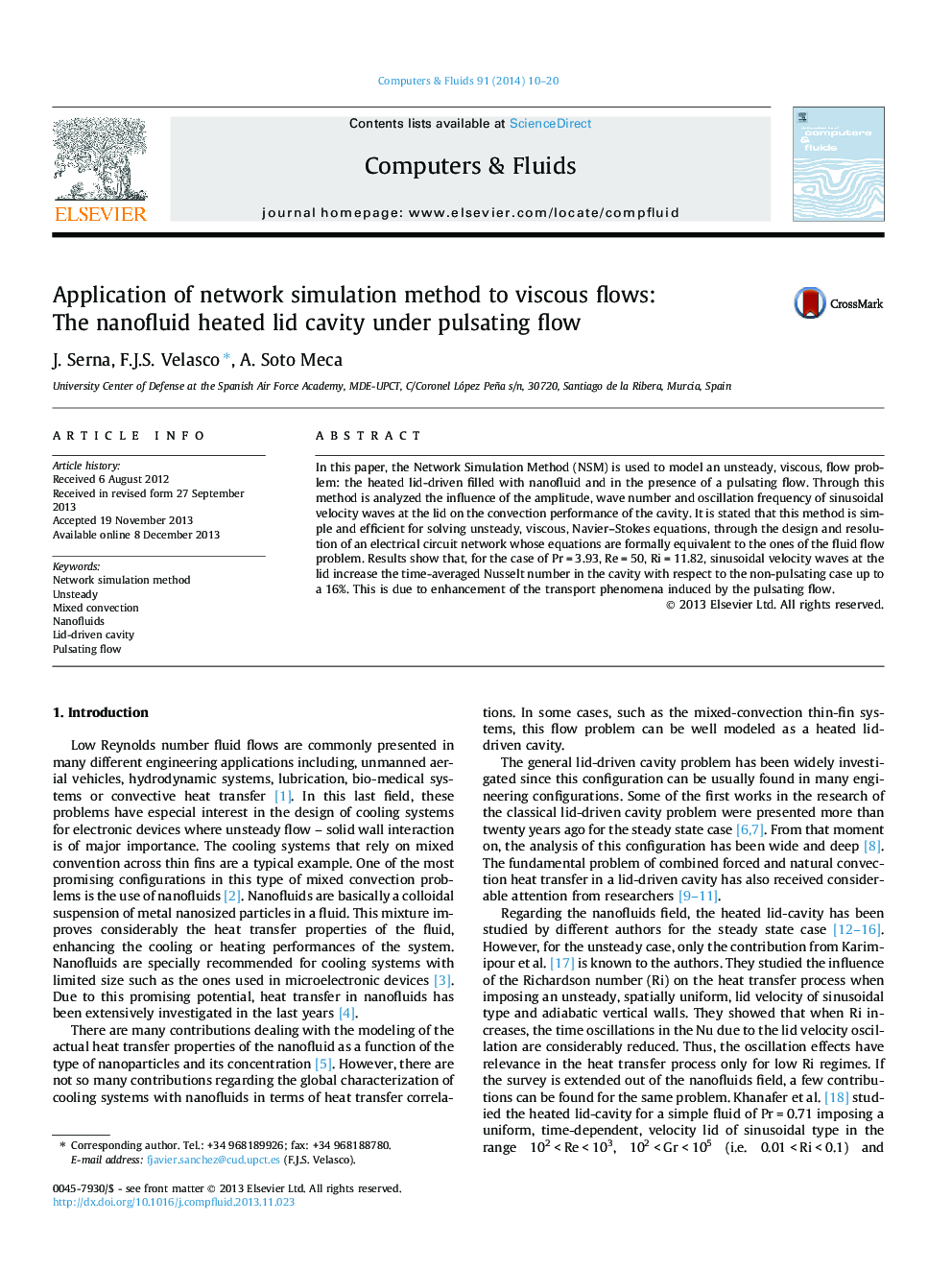| Article ID | Journal | Published Year | Pages | File Type |
|---|---|---|---|---|
| 768551 | Computers & Fluids | 2014 | 11 Pages |
•Network simulation method is used to solve viscous Navier–Stokes equations.•NSM is based on the design of an electric network with equivalent equations.•Pulsed flow at the lid increases the cavity Nu‾ a 16% with respect to the steady case.•This is due to enhancement of the transport phenomena induced by the pulsating flow.
In this paper, the Network Simulation Method (NSM) is used to model an unsteady, viscous, flow problem: the heated lid-driven filled with nanofluid and in the presence of a pulsating flow. Through this method is analyzed the influence of the amplitude, wave number and oscillation frequency of sinusoidal velocity waves at the lid on the convection performance of the cavity. It is stated that this method is simple and efficient for solving unsteady, viscous, Navier–Stokes equations, through the design and resolution of an electrical circuit network whose equations are formally equivalent to the ones of the fluid flow problem. Results show that, for the case of Pr = 3.93, Re = 50, Ri = 11.82, sinusoidal velocity waves at the lid increase the time-averaged Nusselt number in the cavity with respect to the non-pulsating case up to a 16%. This is due to enhancement of the transport phenomena induced by the pulsating flow.
